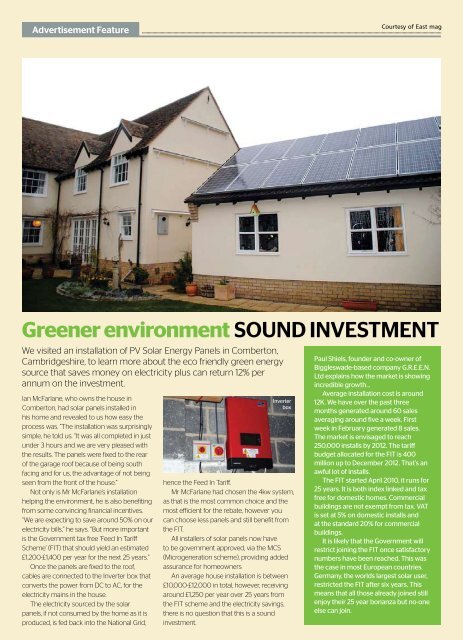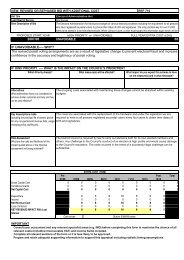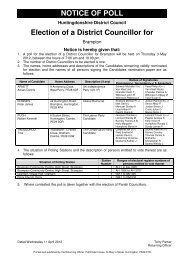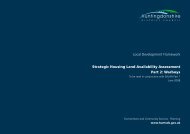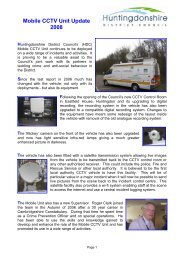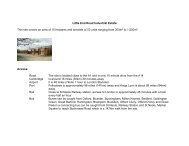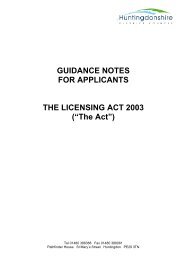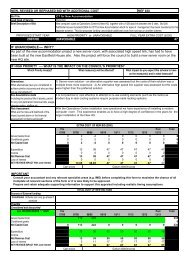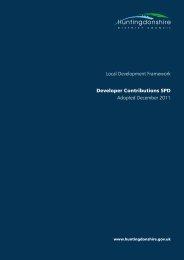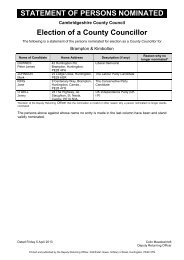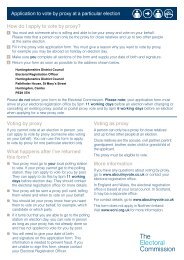District Wide March 2011 - Huntingdonshire District Council
District Wide March 2011 - Huntingdonshire District Council
District Wide March 2011 - Huntingdonshire District Council
Create successful ePaper yourself
Turn your PDF publications into a flip-book with our unique Google optimized e-Paper software.
Advertisement Feature<br />
Courtesy of East mag<br />
Greener environment Sound InVESTMEnT<br />
We visited an installation of PV Solar Energy Panels in Comberton,<br />
Cambridgeshire, to learn more about the eco friendly green energy<br />
source that saves money on electricity plus can return 12% per<br />
annum on the investment.<br />
Ian McFarlane, who owns the house in<br />
Comberton, had solar panels installed in<br />
his home and revealed to us how easy the<br />
process was. “The installation was surprisingly<br />
simple, he told us. “It was all completed in just<br />
under 3 hours and we are very pleased with<br />
the results. The panels were fixed to the rear<br />
of the garage roof because of being south<br />
facing and for us, the advantage of not being<br />
seen from the front of the house.”<br />
Not only is Mr McFarlane’s installation<br />
helping the environment, he is also benefiting<br />
from some convincing financial incentives.<br />
“We are expecting to save around 50% on our<br />
electricity bills,” he says. “But more important<br />
is the Government tax free ‘Feed In Tariff<br />
Scheme’ (FIT) that should yield an estimated<br />
£1,200-£1,400 per year for the next 25 years.”<br />
Once the panels are fixed to the roof,<br />
cables are connected to the Inverter box that<br />
converts the power from DC to AC, for the<br />
electricity mains in the house.<br />
The electricity sourced by the solar<br />
panels, if not consumed by the home as it is<br />
produced, is fed back into the National Grid,<br />
Inverter<br />
box<br />
hence the Feed In Tariff.<br />
Mr McFarlane had chosen the 4kw system,<br />
as that is the most common choice and the<br />
most efficient for the rebate, however you<br />
can choose less panels and still benefit from<br />
the FIT.<br />
All installers of solar panels now have<br />
to be government approved, via the MCS<br />
(Microgeneration scheme), providing added<br />
assurance for homeowners<br />
An average house installation is between<br />
£10,000-£12,000 in total, however, receiving<br />
around £1,250 per year over 25 years from<br />
the FIT scheme and the electricity savings,<br />
there is no question that this is a sound<br />
investment.<br />
Paul Shiels, founder and co-owner of<br />
Biggleswade-based company G.R.E.E.N.<br />
Ltd explains how the market is showing<br />
incredible growth...<br />
Average installation cost is around<br />
12K. We have over the past three<br />
months generated around 60 sales<br />
averaging around five a week. First<br />
week in February generated 8 sales.<br />
The market is envisaged to reach<br />
250,000 installs by 2012. The tariff<br />
budget allocated for the FIT is 400<br />
million up to December 2012. That’s an<br />
awful lot of installs.<br />
The FIT started April 2010, it runs for<br />
25 years. It is both index linked and tax<br />
free for domestic homes. Commercial<br />
buildings are not exempt from tax. VAT<br />
is set at 5% on domestic installs and<br />
at the standard 20% for commercial<br />
buildings.<br />
It is likely that the Government will<br />
restrict joining the FIT once satisfactory<br />
numbers have been reached. This was<br />
the case in most European countries.<br />
Germany, the worlds largest solar user,<br />
restricted the FIT after six years. This<br />
means that all those already joined still<br />
enjoy their 25 year bonanza but no-one<br />
else can join.


